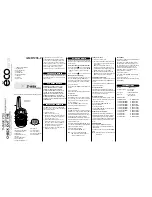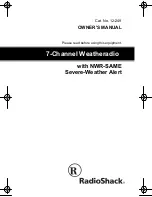
53
English
Disposal
At the end of the useful life, in particular when malfunctions occur,
disable the device by disconnecting the power cord from the socket
and cutting the cord. Dispose of the device according to the effective
environmental regulations in your country. Electronic waste must not
be disposed of with household waste. Consult your local authorities or
dealer for advice regarding recycling regulations.
Batteries/Accumulator
Notes concerning the handling of batteries/accumulators:
■
Keep your batteries/accumulators away from children. They are
■
no
toys!
Never throw batteries/accumulators into fire, do not submerge in
■
water.
Observe polarity when inserting the battery; the positive pole (+) of
■
the battery must point towards the backside of the remote control.
Do not open batteries/accumulators forcibly.
■
Avoid contact with metallic objects (rings, nails, screws etc.)
■
Danger
of short circuit!
A short circuit may cause the batteries/accumulators to build up
■
extreme heat and perhaps to ignite, with burns as possible result.
If a battery/accumulator leaks, do not rub the liquid into your eyes
■
or mucus tissues. In case of contact, wash your hands, rinse eyes
with clear water, and, in case of continuous discomfort, consult a
physician.
Exhausted batteries do not belong to household waste. Bring your
■
old batteries to a designated collection point.
These signs can be found on contaminated coin cells:
PR = contains zinc
LR = contains alkaline manganese
SR = contains silver oxide/ zinc
CR = contains lithium manganese dioxide
Содержание IR 4430
Страница 3: ...Übersicht der Bedienelemente 2 Location of Controls 3 ...
Страница 57: ......






































